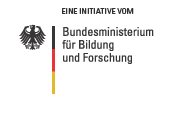Paul Saftig: Blunting the Alzheimer's scissors
-
 <ic:message key='Bild vergrößern' />
<ic:message key='Bild vergrößern' />
- Paul Saftig is one of the three directors of the Institute of Biochemistry at the University of Kiel. Quelle: Andrea Dankwardt
10.02.2011 -
The precise mechanism of development of Alzheimer's disease is still not fully understood. What is known is that small protein fragments that accumulate in the brain, and which cluster together into so-called plaques, play a devastating role. The surrounding nerves die off, and cognitive ability falls drastically. Paul Saftig from the University of Kiel is interested in the ‘molecular scissors’ that produce these protein fragments. Over the past twelve years, the biologist has focused his attention on three genes in particular that are responsible for the formation of these Alzheimer's scissors. In a surprise revelation, the scissors, which cause so much damage in affected patients, also appear to have a useful role. For this discovery, Saftig has been awarded with Germany’s highest endowed Alzheimer’s award.
Sometimes, a young researcher’s best new ideas can emerge during an evening at the pub. In the mid 90s, shortly after Saftig had completed his post-doctorate, he took up a position as a guest researcher at the University of Leuven in Belgium. During an evening out on the town with fellow researchers, talk turned to Presenilin 1 and 2, the names of two genes in the human genome. His Belgian colleagues had noticed that patients carrying a mutation of these genes suffered from a particularly severe form of Alzheimer's. As a specialist in experiments using so-called knockout mice, Paul Saftig was quick to suggest a cooperation to clarify the biological function of Presenilin 1 and 2. A short time later, in collaboration with the Belgian team, he discovered that one of these genes is responsible for the formation of the so-called Alzheimer's scissors.
Knockout mice provide possible therapeutic approaches
The much-feared protein deposits in the brains of affected individuals consist largely of beta-amyloid. This is a small protein molecule that forms when specific enzymes, the Alzheimer's scissors, dissect a larger protein in the nerve cell. In cooperation with the Belgian researchers, Saftig bred knockout mice in which the Presenilin 1 gene had been switched off. The production of beta-amyloid in the nerve cells of these mice was reduced by 80 percent compared to neurons from control mice, and the researchers concluded that by inhibiting the Presenilin 1 gene, the formation and accumulation of the plaques could be reduced.


After this first big research success, Paul Saftig completed his post-doctoral studies in Göttingen^, and in 2001 was appointed Professor and one of the three directors of the Biochemical Institute at the University of Kiel. The Hennef-born biologist brought with him awareness of the European Research Area from his time in Belgium. In his research projects, he frequently collaborated with universities from across Europe. “These cooperations with other research groups are vital in order to move forward,” he explains.
Disease-causing enzymes with important functions
Saftig has remained true to his research theme. In the meantime, his team has explored further genes that are responsible for specific Alzheimer's scissors. The crucial aspect: “All cleaving proteins have numerous functions that must be investigated if we want to come closer to a therapy,” says the 48-year-old. For example, the enzyme scissors beta-secretase, BACE for short, is a possible trigger for Alzheimer's and is also involved in an important healthy nerve function in the body.
For his work, Saftig has been awarded with the 100,000-euro 2011Hans and Ilse Breuer Award for Alzheimer's research. It is the sixth time round for the award, and the highest endowed in the field of German Alzheimer's research.
| Background |
Looking for more detailed information on Paul Saftig’s work? Visit the website of the Department of Molecular Cell Biology and Transgenic Research at the Institute of Biochemistry, University of Kiel. |
The enzyme severs the beta-amyloid, which clumps together into plaques but is also required for the myelination of nerve cells, out of the precursor protein. Here, glial cells wrap around the neurons, and among other functions, enable rapid signal transmission to the nerves. “Our long-term objective is now to find the right therapeutic window. We want to somehow block the enzyme, although keep side-effects to a minimum,” says Saftig. This is because the useful functions of the enzymes should be retained.
It will be a long path until a therapy can be developed, however, but the researchers have learned to think in the long term. For example, Saftig is looking into findings made right at the beginning of his career. A clinical study is currently testing a drug against the rare inherited disease α-mannosidase. Enzymes whose substrates accumulate excessively in the tissues of affected individuals also play a role. In the mouse models, Saftig’s team discovered that repeated administration of the missing enzyme dramatically improved the symptoms. “It's still essentially a result of my doctoral research work, and we are very pleased that these findings are now being incorporated in patient treatment,” he says. This is not a claim that every basic researcher is able to make of their work.
Author: Ute Zauft


